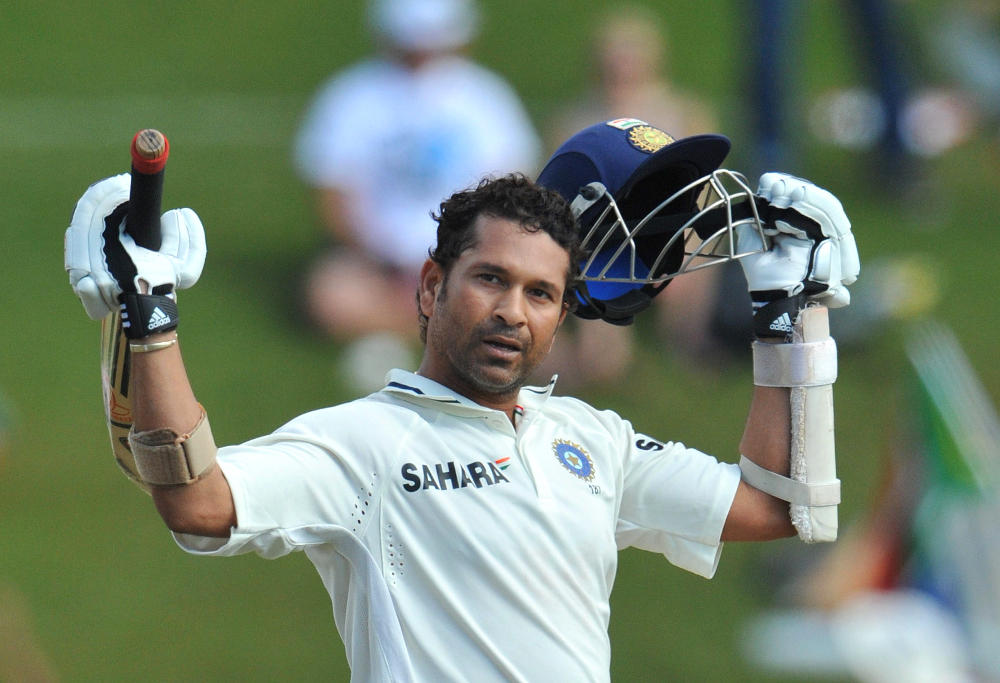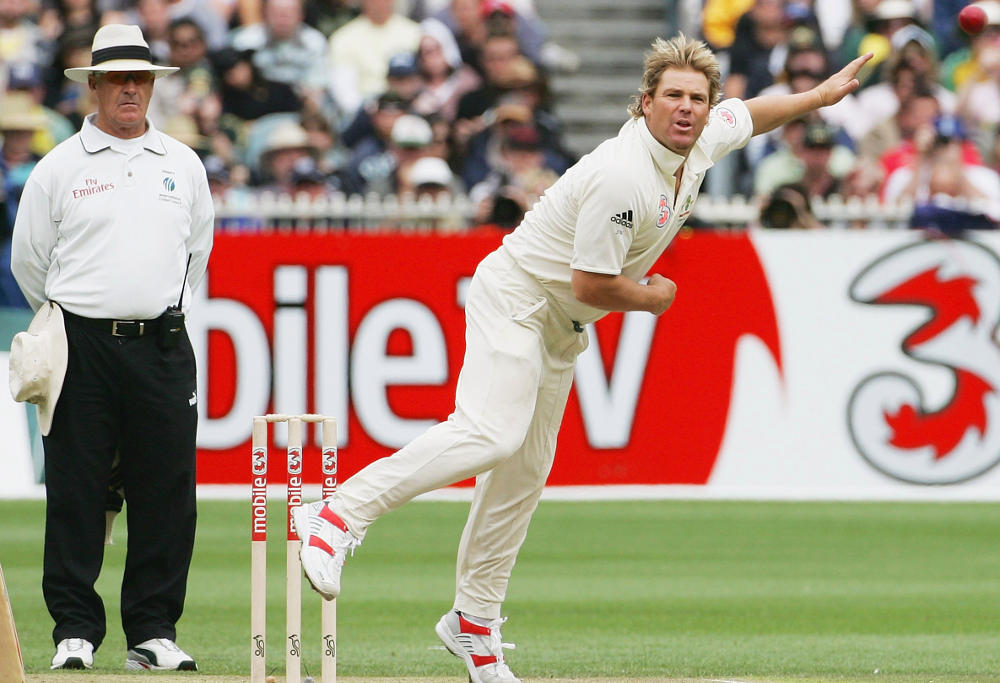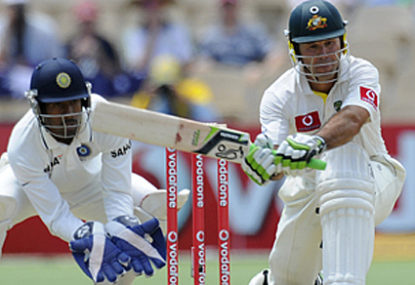When Steve Waugh and Ricky Ponting captained the Australian cricket team, we lived by the mantra that if we woke up every day looking to get better, then we could always keep improving.
Ultimately, that’s what distinguishes the great craftsmen of our game and sets the masters apart from the good players. They love the game, and they’re always thinking of ways to get better and improve.
The second distinguishing factor is that although many players can be a master of their craft in the nets or on the practice field, the true greats perform their skills under the pressure of a match situation.
Choosing three craftsmen of our game was tough, but these three men, legends, have personified these traits better than anyone else I played with or against.
Sachin Tendulkar
When we’re talking about cricket’s craftsmen, the first one has to be Sachin. I remember fielding at bat-pad to Tendulkar, and it was almost like he was in a meditative state every time he strode to the crease. He was completely calm with an expressionless face, succumbing every now and then to a simple nod to himself; reminding himself that his concentration was working just fine.
The crowds he performed in front of were the opposite. Playing against Sachin in India was like playing cricket in the middle of the biggest rock concert you’ve ever seen. The crowd would sit there chanting “Sachin, Sachin, Sachin!” all day long. Whenever he did anything – including something as small as hitting a single or even just a forward defence – the masses would erupt.
We all reckon the Barmy Army can sing, but Indians in India, well, that was something else.
As a batsman, Sachin was a little unusual. He was a very small in physical stature, but he used these really heavy bats, gripping them right down the bottom of the handle. But his technique was beautiful; he never seemed to over-hit the ball, and all his shots had a real grace and timing about them.
Look at his on-drive. The on-drive is the hardest shot in the game to play, yet it was uncanny how many times Sachin (and Ricky Ponting, for that matter) got off the mark by caressing the ball either side of the mid-on fieldsman. That tells me their balance was perfect, that their confidence in themselves was elite.
The way Sachin played his on-drive and straight drive, with minimum fuss and effort, was honestly unbelievable, and you could see that from very early on.
I remember watching his third Test hundred at the WACA when he was young and the baby-faced assassin – I wasn’t playing then, but I was watching at the ground. Sachin was facing guys like Merv Hughes, and just blocked balls down the ground which ended up flying to the boundary.
That was Sachin’s introduction to my world of admiration, and you could see even then what a player he was.

(Photo by Duif du Toit / Gallo Images/Getty Images)
Shane Warne
One of the great privileges of my life was playing cricket with Shane Warne. Just like the on-drive is cricket’s hardest shot to play, there’s no harder – and higher – art for bowlers than leg-spin, and Warnie is leg-spin’s great master.
So much set him apart from other bowlers. He never used to drop fielders back, even after you’d whack him for a boundary or two. It was him refusing to admit defeat, almost like he was daring you to try and hit another one off him. He was a competitive animal and a genius for it.
Unlike many other bowlers, I never felt in danger fielding at short leg to Warnie. When other spinners were bowling it could get a bit nerve-wracking, but with Shane, you felt safe, and you were always in the game.
When Warnie and I went to the Cricket Academy together, we used to stay at the Alberton Hotel in Port Adelaide. I remember Warnie sitting at a pool table at the end of the day, with a can of Coke in his hand, spinning his leg-spinner into the far-left pocket. Then his wrong un would loop into the far-right pocket and he’d send his flipper up and down the table like a tracer bullet.
We talk about craftsmen mastering their sport, mastering their art, and that was exactly what Warnie did. He didn’t love running laps or spending time in the gym, but my gosh he spent some time mastering his craft in the nets at the Academy.
The famous Adelaide Ashes Test in 2006-07 is an excellent example of just how good he was – you can’t win a Test like that without a great player like Shane Warne.
Not only did he take four wickets in the second innings, but in the 32 overs he bowled he went for less than 50 runs. He didn’t just take the big wickets, like bowling Kevin Pietersen around his legs, he also didn’t let England score off him.
That’s what the great players do – it’s not that they necessarily spin or seam or swing the ball more, it’s that they don’t let the opposition score freely. Not only was Warnie brilliant with what he could do with the ball, but he just didn’t let the opposition score off him.
Put simply, he was a genius and I absolutely loved playing with him.

(Photo by Hamish Blair/Getty Images)
Ricky Ponting
Like Sachin, Ricky’s attention to detail was superb.
He never stopped mastering his craft. Early on, he really struggled in India but he managed to overcome that, and he continued improving his batting right up until the end of his career.
I was Australia’s batting coach at that time, and he came up with this drill where, because he felt he was falling over in his stance a little bit, he set up a bowling machine and literally just stood dead still. No foot movement at all, hitting hundreds of balls, because all he wanted to do was to get the feeling of being nice and still at the crease.
I talked about Sachin’s on-drive, and Ricky’s was just as good, if not better. It’s so rare to see anyone play the shot like he could, especially against the new ball. So many times he’d get off the mark using the on-drive, smacking the ball down the ground, but he’d also play the pull and that drive of his which was somewhere between a back-foot drive and a cut. It was unbelievable.
As great a batsman as Ricky was, he was also one of cricket’s great craftsman of the art of fielding.
He was a great fielder; excellent at throwing down the stumps, a brilliant catcher, incredibly athletic. He mastered that by constantly practising the art. People might say that’s an obvious thing to say, but that’s not necessarily the case in the modern game, because not many people do it.
A bit like Warnie, Punter didn’t necessarily like running laps and getting in the gym to lift weights like a lot of modern players do.
What he did do was field for hours. Quite literally. He’d have this drill where he’d have to hit the stumps, and he’d keep going until he completely mastered it.
Ricky Ponting’s famous catch-cry to me is “JL, I’ve never met someone who gets better at something doing less of it.”
He mastered the arts of fielding and batting through meticulous practice, and lots of it.
Then there was his toughness. Ricky was tough. So tough.
Batting with someone like that was unbelievable. Ricky is the type of guy you would never fight because you’d never knock him out, he’s that tough. Playing alongside someone like that gave you so much confidence; a truly amazing experience, a truly amazing person and an incredible modern-day craftsman.
Much like how these three cricket legends created superb careers on the field, Chubb crafts outstanding insurance solutions for everyone, no matter how big or small their requirements are. Not just insured – Chubb insured.































































































